Mega-Project Efficiency: Prefab Building Solutions Deliver Rapid Container Worker Dormitory Deployment for Remote Construction Sites
2025-Aug-21 13:21:44
By Admin
1. Introduction
Mega-construction projects, such as large-scale infrastructure developments, mining operations, and energy facilities, often take place in remote locations far from urban centers. These projects require a substantial workforce, and providing safe, comfortable, and timely accommodation for workers is a critical component of ensuring project success. Traditional construction methods for worker dormitories in such settings are plagued by delays, high costs, and logistical challenges.
Prefab building solutions, particularly container-based worker dormitories, have emerged as a game-changing alternative. These modular structures offer rapid deployment, cost-effectiveness, and adaptability, making them ideal for meeting the urgent housing needs of remote mega-projects. This article explores how prefab building solutions, with a focus on container worker dormitories, enhance efficiency in remote construction sites, from their design and benefits to real-world applications and future potential.
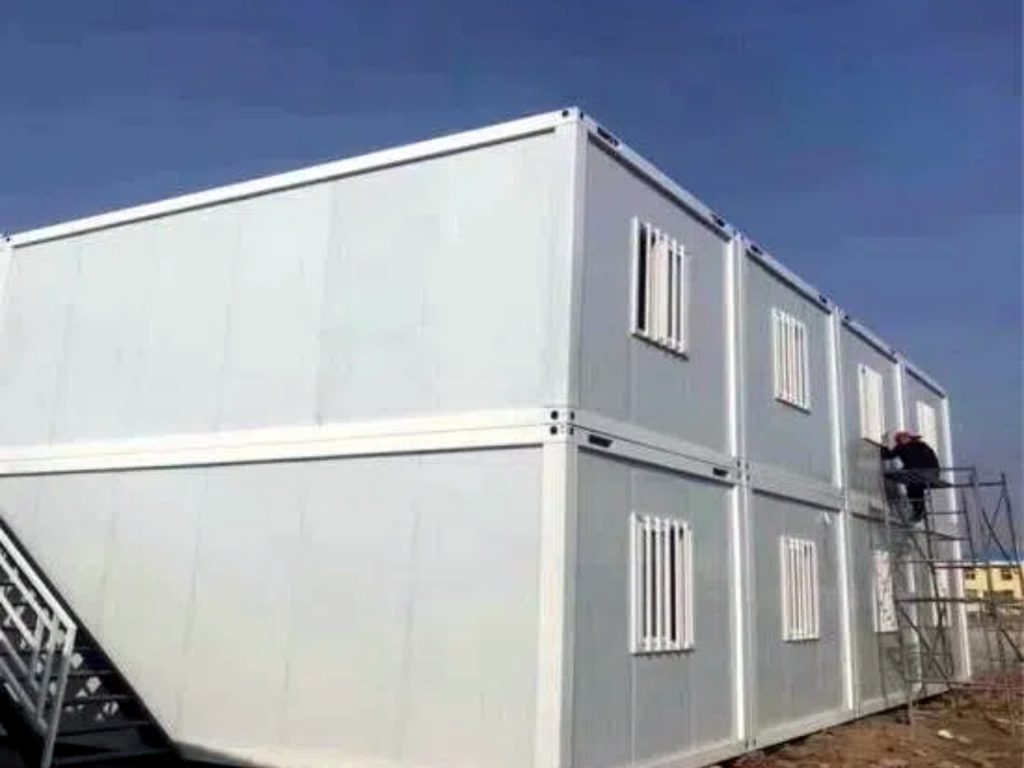
2. The Challenges of Worker Accommodation in Remote Mega-Projects
2.1. Time Constraints and Scheduling Pressures
Mega-construction projects operate on tight schedules, with penalties for delays that can run into millions of dollars. One of the biggest bottlenecks is the construction of worker accommodation. Traditional on-site building methods are time-consuming, requiring extensive groundwork, material transportation, and labor coordination. In remote areas, where access is limited and weather conditions can be harsh, these delays are exacerbated.
Workers often arrive on-site before accommodation is ready, leading to temporary and inadequate living conditions that can impact morale and productivity. This creates a 恶性循环: delayed accommodation leads to delayed project timelines, which in turn increase costs and reduce profitability.
2.2. Logistical and Supply Chain Challenges
Remote construction sites face significant logistical hurdles. Transporting building materials, tools, and equipment to these locations is expensive and complex, often requiring specialized vehicles or even air transport. Supply chains are vulnerable to disruptions, such as weather events, road closures, or political instability, which can halt construction of worker dormitories altogether.
Traditional building materials, such as bricks, cement, and timber, are heavy and bulky, making them difficult to transport in large quantities to remote areas. This not only increases costs but also contributes to project delays as materials arrive in fits and starts.
2.3. Environmental and Regulatory Constraints
Remote construction sites are often located in ecologically sensitive areas or regions with strict environmental regulations. Traditional construction methods can cause significant environmental damage, including deforestation, soil erosion, and pollution, which can lead to regulatory fines and project shutdowns.
Obtaining permits for traditional construction in remote areas can be a lengthy and bureaucratic process, further delaying the provision of worker accommodation. Compliance with local building codes and safety standards adds another layer of complexity, especially in regions with underdeveloped regulatory frameworks.
2.4. Worker Welfare and Productivity
The quality of worker accommodation directly impacts productivity and retention. In remote locations, workers often spend extended periods away from their families, making comfortable, safe, and functional living conditions essential. Traditional temporary housing, such as tents or poorly constructed shacks, offers little protection from the elements and lacks basic amenities, leading to health issues, low morale, and high turnover rates.
High turnover disrupts project workflows, increases training costs, and delays progress. Providing adequate accommodation is not just a humanitarian concern but a critical factor in ensuring the efficiency and profitability of mega-construction projects.
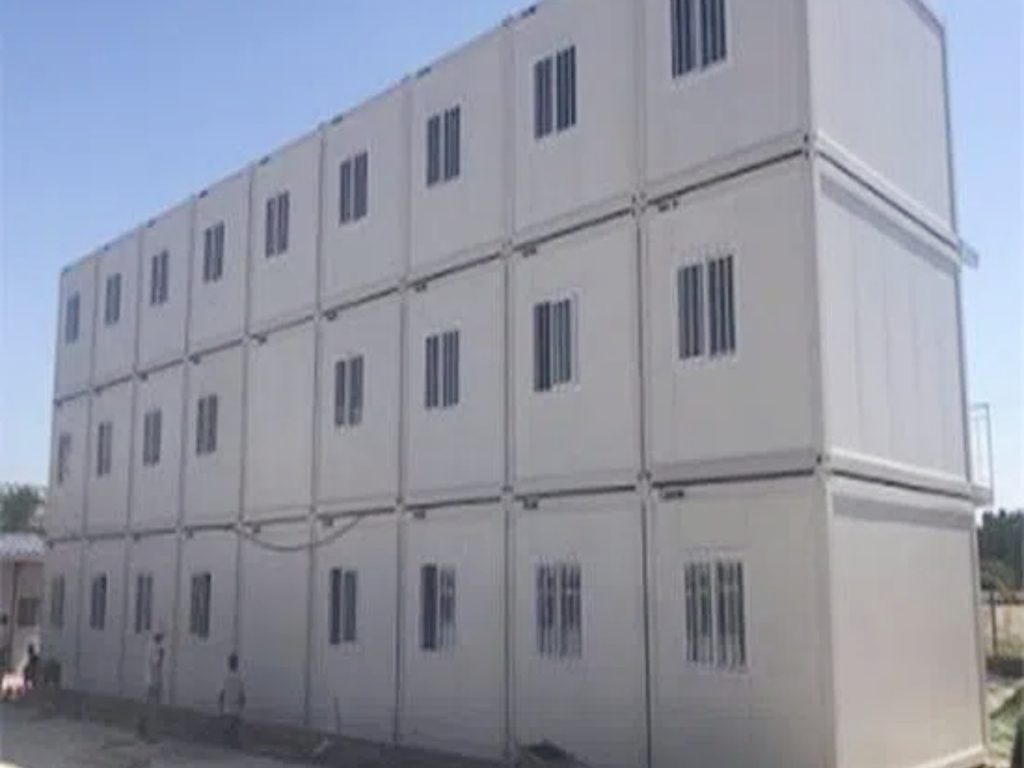
3. Prefab Building Solutions: A Primer
3.1. What Are Prefab Building Solutions?
Prefab, or prefabricated, building solutions involve the manufacturing of building components off-site in a controlled factory environment, which are then transported to the construction site for assembly. This approach contrasts with traditional on-site construction, where all building work is carried out at the final location.
Prefab solutions include a range of options, from modular buildings (composed of volumetric units) to panelized systems (using wall, floor, and roof panels). Container-based dormitories, which repurpose or purpose-build shipping containers into living spaces, are a popular form of prefab accommodation due to their durability, portability, and cost-effectiveness.
3.2. Advantages of Prefab Solutions for Remote Sites
Prefab building solutions offer numerous advantages for remote construction sites:
- Rapid Deployment: Factory manufacturing allows for parallel processing, where building components are produced while site preparation is underway. This significantly reduces construction time, with prefab dormitories often assembled in a fraction of the time required for traditional buildings.
- Cost-Effectiveness: Factory production reduces material waste and labor costs, while standardized designs minimize engineering and design expenses. The ability to transport prefab components efficiently also lowers logistics costs compared to transporting bulk materials.
- Quality Control: Factory environments enable strict quality control measures, ensuring that building components meet consistent standards. This reduces the risk of defects and ensures compliance with safety and building codes.
- Flexibility and Scalability: Prefab dormitories are modular, allowing for easy expansion or reconfiguration as workforce numbers change. They can also be disassembled and relocated to other sites once a project is complete, maximizing asset utilization.
- Environmental Benefits: Prefab construction generates less waste than traditional methods and can incorporate sustainable materials and energy-efficient features. The reduced need for on-site construction activity also minimizes environmental disruption.
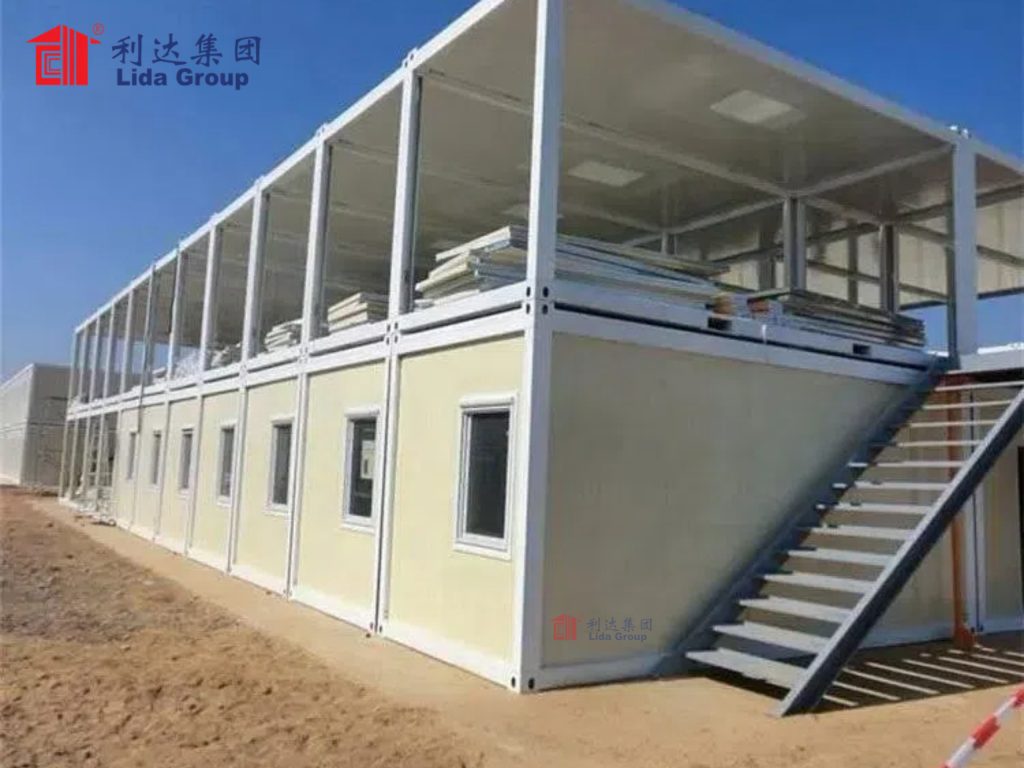
4. Container Worker Dormitories: The Ideal Solution for Remote Mega-Projects
4.1. Design and Customization
Container worker dormitories are designed to maximize space efficiency while providing essential amenities. Standard shipping containers (20 feet or 40 feet in length) form the basic unit, which can be modified to include bedrooms, bathrooms, common areas, and storage spaces.
Modern container dormitories are highly customizable. Internal layouts can be tailored to accommodate varying numbers of workers, from single-occupancy rooms to shared dormitories with bunk beds. They can be fitted with insulation, heating, ventilation, and air conditioning (HVAC) systems to ensure comfort in extreme climates. Windows, doors, and skylights are added to improve natural light and ventilation, while electrical and plumbing systems are integrated to provide power, water, and sanitation.
Externally, containers can be painted or clad to enhance aesthetics and provide additional protection from the elements. Multiple containers can be stacked or connected to create larger complexes, including communal kitchens, recreation rooms, and laundry facilities.
4.2. Durability and Adaptability
Shipping containers are built to withstand harsh marine environments, making them inherently durable and suitable for remote construction sites. They are resistant to extreme temperatures, wind, rain, and pests, ensuring a long lifespan even in challenging conditions.
Their modular design allows for easy adaptation to different site requirements. Container dormitories can be placed on temporary foundations, such as concrete blocks or steel piers, reducing the need for extensive groundwork. This makes them ideal for sites with uneven terrain or limited access to heavy construction equipment.
In addition, container dormitories can be quickly disassembled and transported to new locations, making them a sustainable choice for projects with short to medium durations. This reusability reduces the environmental impact of construction and lowers long-term costs.
4.3. Rapid Deployment Process
The deployment of container worker dormitories follows a streamlined process that minimizes on-site construction time:
- Design and Manufacturing: The dormitory layout is designed based on project requirements, and container modifications are carried out in a factory. This includes installing insulation, utilities, fixtures, and fittings.
- Transportation: Completed containers are transported to the remote site using trucks, trains, or ships, depending on accessibility. Their standard dimensions make them easy to handle and transport efficiently.
- Site Preparation: While containers are being manufactured, the site is prepared with basic infrastructure, such as temporary foundations, utility connections, and access roads.
- Assembly: Containers are delivered to the site and positioned using cranes or forklifts. They are then connected to utilities (power, water, sewage) and finished with external cladding or landscaping as needed.
This process can see worker dormitories operational in weeks rather than months, allowing mega-projects to mobilize their workforce quickly and efficiently.
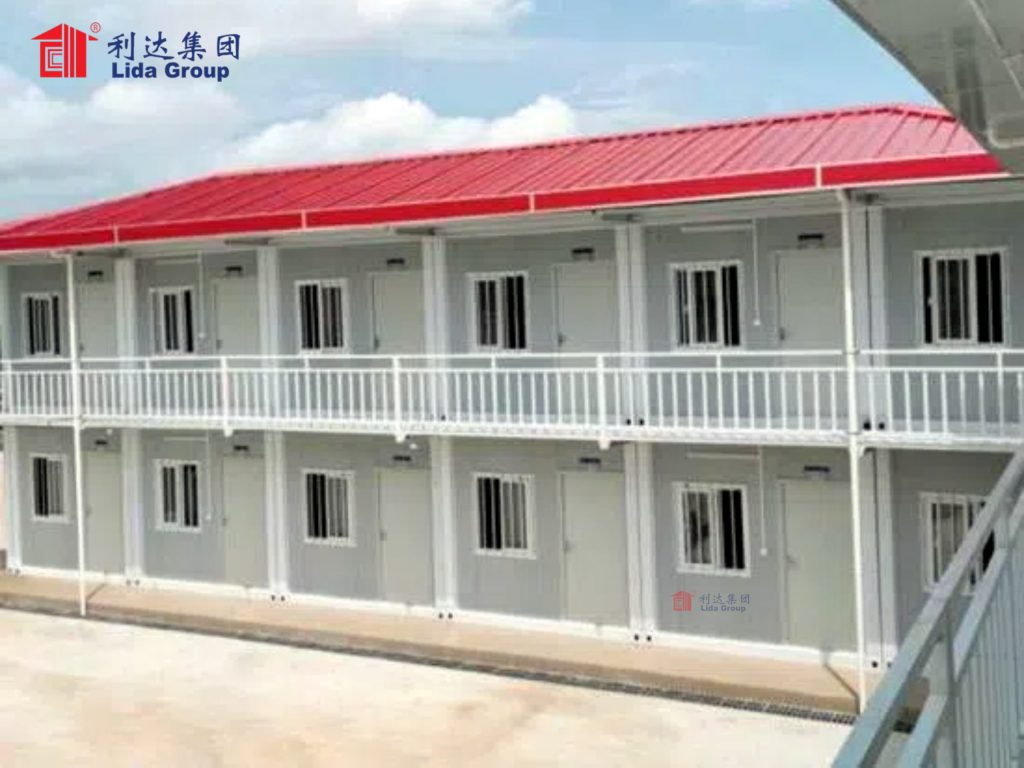
5. Enhancing Mega-Project Efficiency with Container Dormitories
5.1. Accelerating Project Timelines
The rapid deployment of container worker dormitories is a key driver of mega-project efficiency. By providing accommodation quickly, projects can mobilize their workforce earlier, reducing the time between project initiation and full-scale construction. This acceleration can shave months off project timelines, leading to earlier completion and revenue generation.
For example, a mining project in a remote desert region used container dormitories to house 500 workers. Traditional construction was estimated to take six months, but the container solution was deployed in just eight weeks, allowing mining operations to start three months ahead of schedule.
5.2. Reducing Costs
Container dormitories offer significant cost savings compared to traditional construction. Factory manufacturing reduces material waste by up to 30%, while standardized designs lower engineering and labor costs. Transportation costs are minimized due to the efficient packing and handling of containers.
In addition, the rapid deployment of container dormitories reduces the need for temporary accommodation (such as tents or caravans), which can be expensive and uncomfortable. Over the life of a project, the reusability of containers further lowers costs, as they can be relocated to new sites or sold at the end of a project.
A study of a remote infrastructure project found that container dormitories reduced accommodation costs by 40% compared to traditional construction, with additional savings from accelerated project timelines.
5.3. Improving Worker Welfare and Productivity
Container dormitories provide a far higher standard of accommodation than traditional temporary housing. Insulated walls, proper ventilation, and climate control systems ensure comfortable living conditions in all weather. En-suite bathrooms, clean common areas, and basic amenities (such as laundry facilities and recreation spaces) contribute to worker well-being.
Improved living conditions lead to higher morale, lower turnover, and increased productivity. Workers are better rested, healthier, and more motivated, reducing absenteeism and improving work performance. A construction company operating a remote dam project reported a 25% reduction in turnover and a 15% increase in productivity after switching to container dormitories.
5.4. Ensuring Compliance and Safety
Container dormitories are designed and manufactured to meet international safety and building standards, ensuring compliance with local regulations. Factory quality control processes minimize the risk of structural defects, while integrated safety features (such as fire alarms, emergency exits, and non-slip flooring) enhance worker safety.
In remote areas with limited regulatory oversight, prefab solutions provide a reliable way to ensure that accommodation meets minimum safety standards, reducing the risk of accidents and legal liabilities. For example, container dormitories used in a remote oil and gas project in a developing country were able to meet international safety standards, despite local regulations being less stringent.
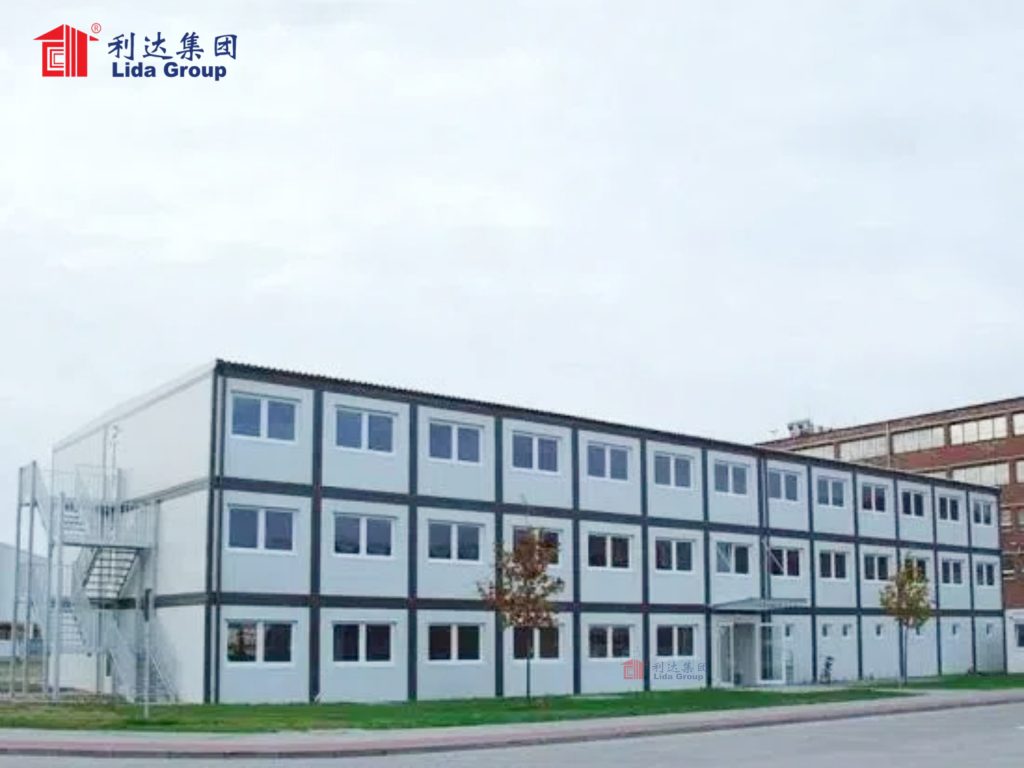
6. Real-World Applications: Container Dormitories in Mega-Projects
6.1. Remote Mining Operation in Northern Canada
A large mining company undertaking a gold mining project in northern Canada faced extreme weather conditions, with temperatures dropping to -40°C in winter. The remote location, accessible only by air or ice road for part of the year, made traditional construction impractical.
The company opted for container worker dormitories, which were manufactured in a southern Canadian factory and transported by ice road during winter. The containers were insulated with high-performance materials and fitted with advanced HVAC systems to withstand the cold. Each dormitory unit housed four workers, with en-suite bathrooms and storage space. Communal facilities included a dining hall, gym, and recreation room, all constructed using connected containers.
The dormitories were deployed in just 12 weeks, allowing the mining operation to start on schedule. Workers reported high satisfaction with the comfortable living conditions, and turnover rates were significantly lower than in previous projects using traditional accommodation. The containers proved durable in the extreme climate, with minimal maintenance required over the project’s five-year lifespan.
6.2. Infrastructure Project in the Australian Outback
A major infrastructure project involving the construction of a new highway in the Australian Outback required accommodation for 800 workers. The remote location, with limited water and power infrastructure, and high temperatures (up to 45°C in summer), presented significant challenges.
Container dormitories were chosen for their rapid deployment and ability to withstand harsh conditions. The containers were fitted with solar panels on the roof to provide electricity, reducing reliance on diesel generators. They also included rainwater harvesting systems and composting toilets to minimize water usage.
The dormitory complex was designed as a modular village, with clusters of container units surrounding communal facilities. The entire complex was deployed in six weeks, with utilities connected to temporary power and water systems. The use of solar power reduced operating costs by 30% compared to diesel-powered accommodation, while the water-efficient design ensured compliance with local environmental regulations.
6.3. Offshore Wind Farm Construction in the North Sea
An offshore wind farm project in the North Sea required accommodation for workers during the construction phase, with workers rotating on and off a jack-up rig. The harsh marine environment, with high winds and salt spray, demanded durable and secure accommodation.
Container dormitories were modified for offshore use, with reinforced structures and corrosion-resistant materials. Each container housed two workers, with soundproofing to reduce noise from the rig’s operations. The containers were stacked on the rig’s deck, with walkways and safety barriers connecting them.
The modular design allowed for easy expansion as the workforce grew, with additional containers added as needed. The dormitories were equipped with heating systems to combat cold temperatures and dehumidifiers to prevent moisture buildup. Workers appreciated the comfortable and secure living conditions, which contributed to a 20% reduction in turnover compared to previous offshore projects.
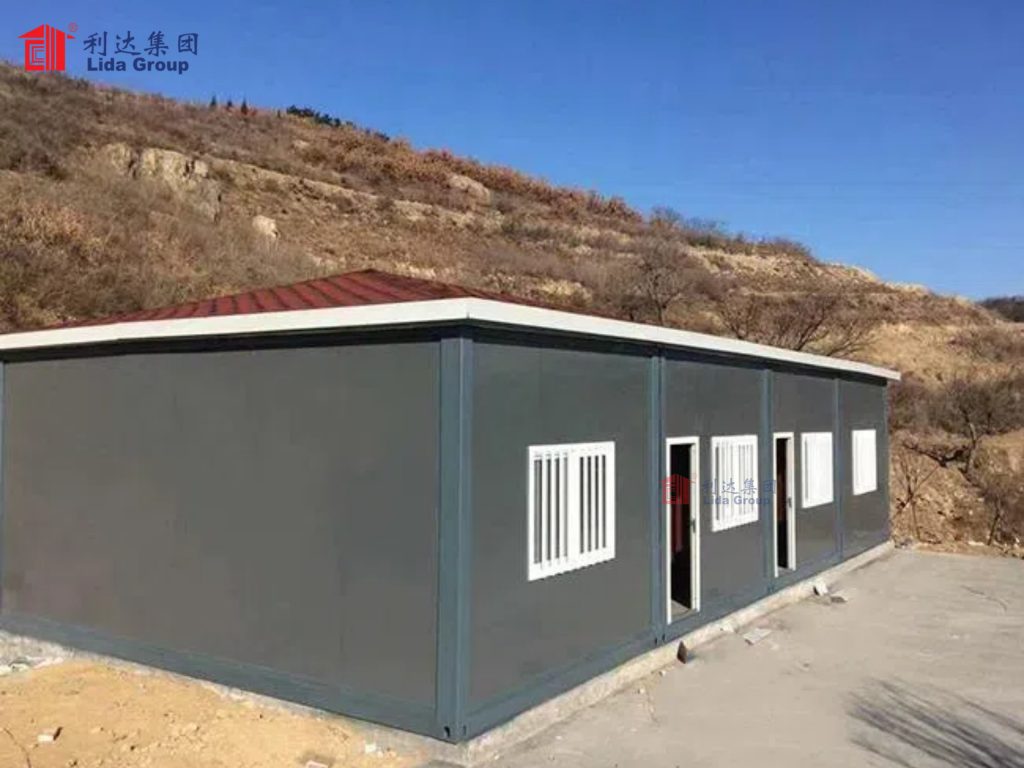
7. Challenges and Solutions in Implementing Container Dormitories
7.1. Site Access and Transportation
Remote construction sites often have limited access, making transportation of container dormitories challenging. Poor road infrastructure, narrow tracks, or lack of ports can complicate the delivery of large containers.
Solutions include using specialized transport vehicles, such as low-loader trucks or amphibious vehicles, to navigate difficult terrain. In some cases, containers can be transported by air using cargo planes or helicopters, although this is more costly. For offshore projects, barges or supply vessels are used to transport containers to the site.
Advanced planning is crucial, with logistics teams conducting detailed route surveys and feasibility studies to identify potential bottlenecks and develop alternative transportation plans.
7.2. Utility Connections in Remote Areas
Connecting container dormitories to power, water, and sewage systems can be challenging in remote areas with no existing infrastructure. This requires the installation of temporary utilities, which can be costly and time-consuming.
Prefab solutions address this by incorporating off-grid technologies into container designs. Solar panels, wind turbines, and battery storage systems provide electricity, while rainwater harvesting, water purification, and composting toilets reduce reliance on external water and sewage systems. These off-grid solutions not only solve utility challenges but also reduce operating costs and environmental impact.
7.3. Adapting to Extreme Climates
Container dormitories must be adapted to withstand extreme climates, from freezing temperatures to scorching heat, high humidity, or strong winds. Poor insulation or inadequate climate control can make living conditions unbearable and damage equipment.
Manufacturers use specialized insulation materials, such as polyurethane foam or rock wool, to provide thermal resistance. HVAC systems are sized appropriately for the climate, with heat pumps for cold regions and high-capacity air conditioning for hot areas. In windy locations, containers are anchored securely to prevent movement, while in humid environments, dehumidifiers and ventilation systems prevent mold growth.
Testing and certification are essential, with containers undergoing climate-specific testing to ensure they meet performance standards in extreme conditions.
7.4. Regulatory Compliance in Diverse Regions
Mega-projects often operate in multiple countries or regions with varying regulatory requirements for worker accommodation. Ensuring compliance with local building codes, safety standards, and labor laws can be complex.
Prefab manufacturers work closely with project teams to understand local regulations and design container dormitories accordingly. They obtain relevant certifications, such as ISO standards or local building approvals, to demonstrate compliance. In regions with underdeveloped regulations, manufacturers can provide guidance based on international best practices, helping projects meet high standards while navigating local requirements.
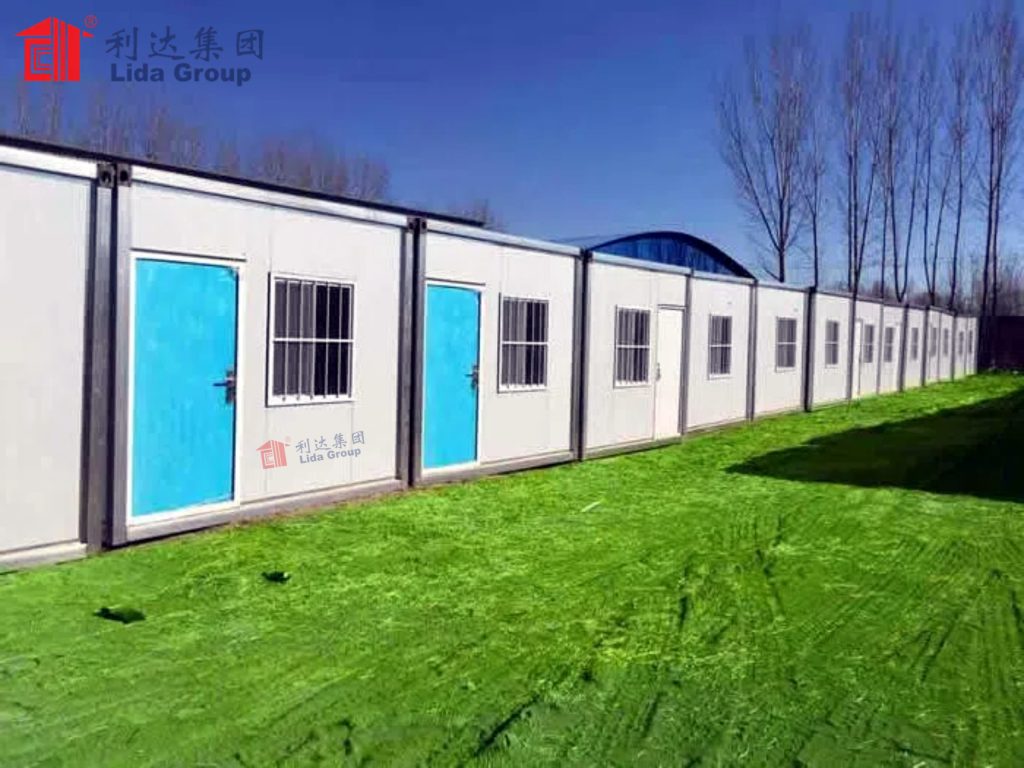
8. Future Trends in Prefab Container Dormitories for Mega-Projects
8.1. Integration of Smart Technologies
The future of container dormitories will see increased integration of smart technologies to enhance efficiency and worker comfort. IoT (Internet of Things) sensors will monitor energy usage, temperature, and occupancy, allowing for optimized resource management. Smart lighting and HVAC systems will adjust automatically based on occupancy and external conditions, reducing energy consumption.
Workers will benefit from smart amenities, such as app-controlled room settings, digital communication systems, and on-demand maintenance requests. These technologies will not only improve living conditions but also provide project managers with valuable data on occupancy rates, utility usage, and maintenance needs.
8.2. Sustainable Innovations
Sustainability will be a key focus, with container dormitories incorporating more eco-friendly materials and technologies. This includes the use of recycled steel in container manufacturing, biodegradable insulation materials, and green roofs or vertical gardens to reduce heat absorption and improve air quality.
Renewable energy integration will advance, with more efficient solar panels, small-scale wind turbines, and hydrogen fuel cells providing off-grid power. Water-saving technologies, such as greywater recycling systems and low-flow fixtures, will minimize water usage, while waste management systems will include composting and recycling facilities.
8.3. Enhanced Comfort and Livability
As competition for skilled workers increases, mega-projects will invest more in enhancing the comfort and livability of container dormitories. This will include larger living spaces, improved interior finishes, and better sound insulation. Communal facilities will be expanded to include fitness centers, recreation rooms, and outdoor spaces for socializing.
Some projects may even incorporate modular housing units that can be customized to meet individual worker preferences, such as private bedrooms or home office spaces. These enhancements will not only improve worker retention but also position mega-projects as desirable employers.
8.4. Standardization and Global Supply Chains
The growth of mega-projects worldwide will drive greater standardization in container dormitory design and manufacturing. This will enable economies of scale, reduce costs, and simplify compliance with international regulations. Global supply chains will emerge, with manufacturers producing standardized components that can be assembled locally, reducing transportation costs and lead times.
Standardization will also facilitate the reuse of containers across projects, with dormitories easily modified to meet the specific needs of different locations and workforce sizes..
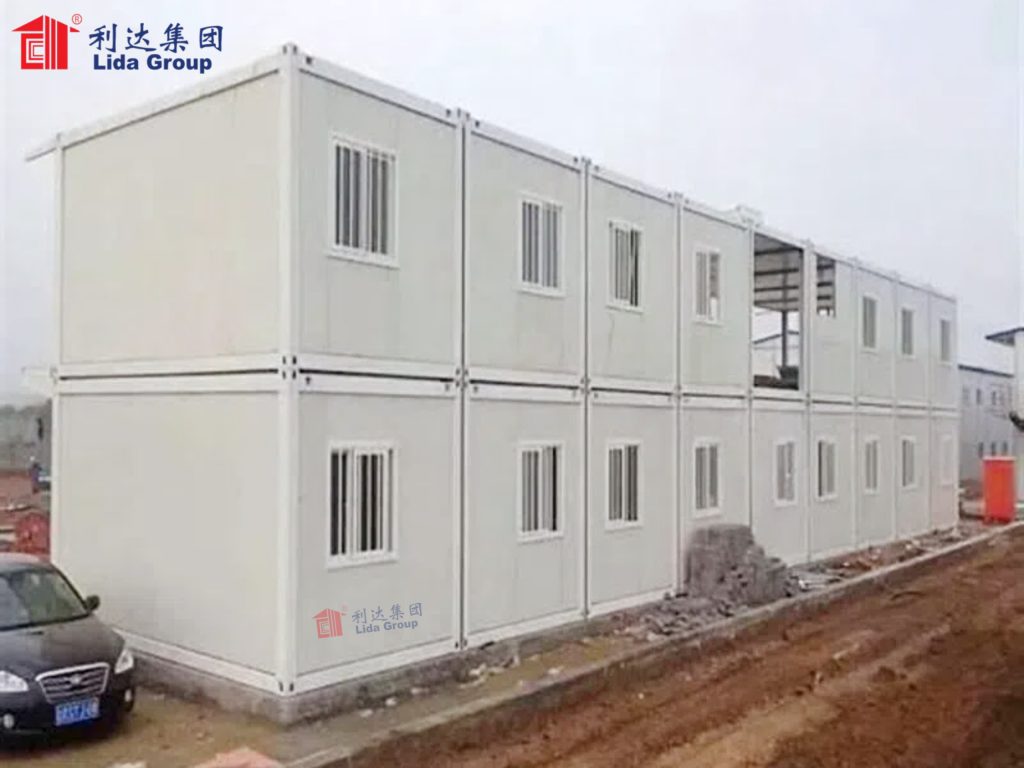
9. Conclusion
Moreover, container dormitories demonstrate a strong commitment to sustainability, with reduced environmental impact compared to traditional construction methods and the potential to integrate renewable energy and water-saving technologies. Their durability and adaptability enable them to thrive in extreme climates and diverse regulatory environments, making them a versatile solution for projects across the globe.
Looking ahead, the integration of smart technologies, sustainable innovations, enhanced comfort features, and standardized global supply chains will further elevate the role of container dormitories in mega-projects. These advancements will not only improve efficiency but also redefine worker accommodation as a strategic asset that contributes to project success, rather than a logistical afterthought.
In an era where mega-projects are increasingly complex and located in remote or challenging environments, prefab container dormitories stand out as a practical, efficient, and sustainable solution. They are not just a temporary housing option but a key enabler of mega-project efficiency, ensuring that workers are housed safely, comfortably, and quickly—ultimately driving the timely and successful completion of some of the world’s most ambitious construction endeavors.

Related news
-
Lida Group Raises Worker Welfare Standards with High-Quality Container House Dormitories Using Advanced Prefab Building Technology
2025-08-20 17:56:38
-
Smart Grain Storage: IoT-Enabled High-Quality Steel Warehouses by Lida Group Feature Real-Time Structural Health Monitoring
2025-08-15 17:40:43
-
Rapid Warehouse Expansion: Lida Group Completes 50,000m² High-Quality Steel Facilities Using Modular Frame Building Kits
2025-08-15 17:06:54
contact us
- Tel: +86-532-88966982
- Whatsapp: +86-13793209022
- E-mail: sales@lidajituan.com


